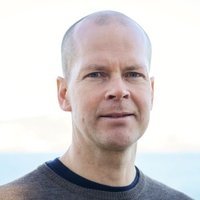Marine Processes and Human Impact

Salmon lice. Photo:
Photo: Lars Are HamreProgramme Description
Key topics include
- Anthropogenic impacts (e.g. ocean acidification, plastic debris, fisheries, petroleum)
- Ocean variability and change, regional downscaling, climate predictions and projections
- Marine ecosystem observations and new methodology/technology
- Productivity, distribution and trophic interactions
- Recruitment dynamics in plankton and fish
- Data management and accessibility
The projects range from large strategic projects entirely funded by the Ministry of Trade, Industry and Fisheries (MTIF) or the Norwegian Research Council (NRC), through medium to pilot studies with various funding sources, e.g. EU, industry and regional research funds.
Activities include quantifying past, present and future oceanic climate in the North Atlantic from the subpolare gyre to the ice edge including interactions between open ocean, shelves and fjords by combining observations and numerical models. Understanding and distinguishing ecosystem impacts resulting from observed natural variations at multiple spatial and temporal scales and anthropogenic forced climate change, which is shown to increase with increasing latitudes. Investigations of the potential of utilizing propagating oceanic signals in ocean predictions for seasons and decades, that are shown to be particularly promising in the northeastern North Atlantic, is a natural prolongation of this work.
A strong seasonal cycle in primary production structures marine ecosystems, in particularly north of 60oN, resulting in strict requirements for timing in life cycles of local marine species. Migratory behaviour and oceanic transports of planktonic stages result in cross-shelf exchange of large amounts of biota (e.g. C. finmarchicus hibernate at depth in the open ocean but also represent key prey items at the shelf for early life stages of fish). Past and ongoing initiatives for better understanding trophodynamics, e.g. related to the recruitment in fish, are becoming more complex as a result of additional anthropogenic stressors acting along with natural variations on individual species and stages. Increasing our capacity to observe structure and functioning in the marine ecosystem, and analyzing the vast amount of data, is being handled at IMR by continuing ongoing monitoring while at the same time developing and utilizing new technology and methods.
State-of-the-art laboratory facilities enable investigations of multiple stressors for supporting in-situ data collection. This includes manipulating natural conditions or introducing anthropogenic stressors to isolate individual responses to single or multiple cues in contrast to real processes in the field where numerous stressors work at the same time.
Impact
The strengths of IMR relative to the above described aims and tasks are the cross-disciplinary scientific staff and the many platforms available for observing responses in individual and populations to biotic and abiotic stressors in the marine environment. Also, our many long time series allow investigations of variability and change in key characteristics of the marine ecosystems, ranging from deep ocean to fjords, essential for providing advice to management. Peer-review publications of results focusing on processes and underlying mechanisms, also addressing impacts of human activities, ensure impact of advices from IMR.
Core Activities
Data/Monitoring
While the regular monitoring at IMR are organized under the other programmes, MarPro has extensive activities utilizing/developing new technology and methods for gathering marine data, handling data, securing data and enable access to the data for internal and external use. This includes cabled observatory, multi-beam acoustics (mounted on ships and submerged platforms), advanced statistics for stock assessment with uncertainties, machine-learning for analyzing big-data, and automated data flow from survey vessels to open access data portals. E.g. the Lofoten-Vesterålen cabled observatory system is a new observational infrastructure led by IMR including national and international partners that will give access to online monitoring across the shelf near key spawning grounds of several large fish species. In sum these activities provide continuous opportunities to revise the regular monitoring wrt. potential improvements and capabilities for dedicated process studies.
Research
Ensuring cross-disciplinary research with outstanding research platforms has resulted in numerous publications in high impact journals. Through past and ongoing projects IMR have published papers quantifying effects of anthropogenic impacts on various trophic levels e.g. threshold levels for oil impact and ocean acidifications. We contribute to the understanding of ocean dynamics and interaction between open ocean, shelves, fjords and ice-edge and have taken part in several recent high-impact papers covering the topic. IMR publications distinguish between impacts of fisheries and climate variability/change, and address uncertainty in stock assessment by combining fisheries dependent and independent data with advanced statistics and models. The use and development of innovating observational technology and methodology for observing in situ structure, functioning and variability/change combined with excellent complementary facilities on land ensures every possibility to continue being in the forefront of marine ecosystem research and advice.
Advice
MarPro has a wide portfolio of projects generating knowledge that support IMR management advice mainly produced through the other IMR programmes. Communication across programmes ensures implementation of new results/methods achieved.
Future Challenges
There is an increasing demand for knowledge to support management advice following new initiatives for harvesting or industry in the marine environment (e.g. deep sea mining, new sites for oil drilling at high latitudes, lower trophic mixed fisheries). In addition, anthropogenic forced changes introduce additional stressors affecting trophodynamics that increase the complexity when attempting to link cause and effect. An increasing demand for understanding climate and human induced impacts on ecosystems instead of only addressing a limited set of species impose requirements of additional data to our regular and long-lasting monitoring surveys. However, while new ways of observing marine ecosystems represent fantastic opportunities to unveil structures and functions in the marine ecosystem it also poses tough requirements on human and computational capacity to analyze data.
Published: 28.05.2021

